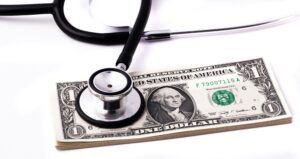
One second in the course of the summer season of 2020, Nick Kharufeh was having fun with an Independence Day occasion along with his household in California. The following, he couldn’t see out of his left eye.
Kharufeh, now 26, was struck within the face by a malfunctioning firework, inflicting extreme injury to and blindness in his left eye—injury his docs mentioned they might do little about. “I assumed my life was over,” says Kharufeh, who till the accident had been coaching to develop into a pilot.
Only some months later, nevertheless, Kharufeh’s mom realized about an experimental trial in Boston. Researchers there have been engaged on a restorative approach meant particularly for sufferers, like Kharufeh, who had single-eye accidents that couldn’t be handled by typical strategies.
A cornea transplant may also help restore operate and imaginative and prescient to a broken eye, however provided that the affected person nonetheless has a wholesome reserve of stem cells across the cornea. These stem cells—grownup cells often known as limbal stem cells, that are distinct from embryonic stem cells—keep the clear floor layer of the attention; with out them, the cornea turns into bumpy, opaque, and painful. This was the case for Kharufeh: white tissue had grown over his eye, which had additionally painfully fused along with his eyelid within the aftermath of his accident.
Extra From TIME
Kharufeh picked up and moved from California to Boston to be a part of the trial. “I used to be advised that there wasn’t a lot hope by all my docs out in California,” he says. “I figured, ‘I would as properly [enroll] as a result of the worst that may occur is I keep blind in that eye and the very best that may occur is I see once more.’”
Three years after his harm, the best-case situation has come true for Kharufeh and a number of other different individuals participating within the trial, early outcomes of that are described in a paper printed Aug. 18 in Science Advances.
First, a surgeon harvests stem cells from a affected person’s wholesome eye by a tiny biopsy, explains principal investigator Dr. Ula Jurkunas, a corneal surgeon on the Harvard-affiliated hospital Mass Eye and Ear, who has fine-tuned this system over the previous 20 years. Then, technicians divide the biopsied pattern into even smaller items and add enzymes that separate stem cells from their underlying tissue. The cells develop for about two weeks, till they’ve fashioned a sheet. The sheet of cells is then transplanted into the injured eye, restoring the pure course of that retains the cornea functioning appropriately.
In two sufferers included within the Science Advances paper, this system resulted in imaginative and prescient enhancements with out additional therapy. And in two others, the process restored operate properly sufficient for them to obtain cornea transplants.
The paper focuses on the primary 5 individuals to enroll within the trial, in considered one of whom the stem-cell harvesting and grafting approach was not profitable. Kharufeh joined the subsequent part of the trial and is thus not included within the printed research, however has undergone the identical process and might be included in future publications.
Different researchers, each within the U.S. and abroad, have experimented with varied methods of utilizing stem cells to revive imaginative and prescient. Regulators in Europe have already authorised a remedy much like the one developed at Mass Eye and Ear, and a few docs within the U.S. carry out other forms of limbal stem cell transplants. However Jurkunas says different strategies require both a bigger biopsy, which might be dangerous for the affected person’s wholesome eye, or donor cells, which might be rejected. The profitable trial utilizing such a small quantity of a affected person’s personal cells is an thrilling milestone. That mentioned, the strategy continues to be experimental. Jurkunas’ lab continues to hone it, and she or he says the subsequent step is working with U.S. regulators to design bigger research. It would even be necessary, she says, to ensure different surgeons and laboratories can duplicate the approach she and her colleagues at Dana-Farber Most cancers Institute, Boston Kids’s Hospital, and the JAEB Heart for Well being Analysis spent so lengthy perfecting.
The process described within the paper can be meant for a particular group of sufferers: individuals who nonetheless have one wholesome eye from which to reap stem cells, but in addition have an harm in depth sufficient to rule out a cornea transplant. Jurkunas estimates about 1,000 individuals within the U.S. meet that description yearly. However, she says, the strategy is a “stepping stone” to future cell therapies.
The process has already been big for Kharufeh, whose left-eye imaginative and prescient is now blurry however practical, with the potential for much more dramatic enchancment with additional corrective surgical procedure. “I can utterly navigate my house or stroll throughout the road with simply my dangerous eye now,” he says.
Kharufeh has put apart his dream of changing into a pilot, however along with his eyesight enhancing and fewer follow-up appointments required on the hospital, he’s even considering of going again to high school to get his grasp’s diploma in advertising and marketing.
“It’s so cool,” he says, “to see out of my left eye.”
Extra Should-Reads From TIME



